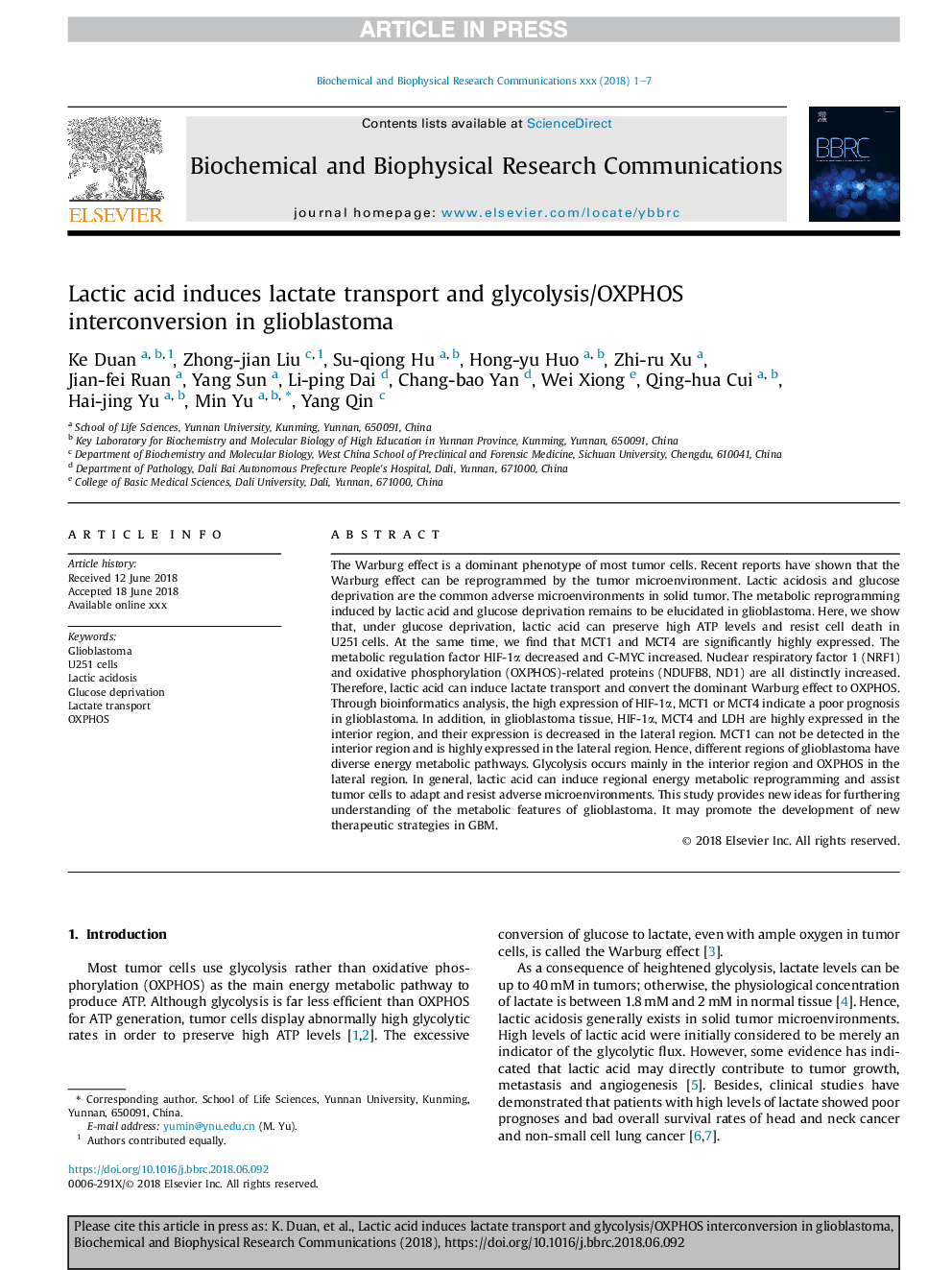| کد مقاله | کد نشریه | سال انتشار | مقاله انگلیسی | نسخه تمام متن |
|---|---|---|---|---|
| 8292372 | 1536726 | 2018 | 7 صفحه PDF | دانلود رایگان |
عنوان انگلیسی مقاله ISI
Lactic acid induces lactate transport and glycolysis/OXPHOS interconversion in glioblastoma
دانلود مقاله + سفارش ترجمه
دانلود مقاله ISI انگلیسی
رایگان برای ایرانیان
کلمات کلیدی
موضوعات مرتبط
علوم زیستی و بیوفناوری
بیوشیمی، ژنتیک و زیست شناسی مولکولی
زیست شیمی
پیش نمایش صفحه اول مقاله

چکیده انگلیسی
The Warburg effect is a dominant phenotype of most tumor cells. Recent reports have shown that the Warburg effect can be reprogrammed by the tumor microenvironment. Lactic acidosis and glucose deprivation are the common adverse microenvironments in solid tumor. The metabolic reprogramming induced by lactic acid and glucose deprivation remains to be elucidated in glioblastoma. Here, we show that, under glucose deprivation, lactic acid can preserve high ATP levels and resist cell death in U251â¯cells. At the same time, we find that MCT1 and MCT4 are significantly highly expressed. The metabolic regulation factor HIF-1α decreased and C-MYC increased. Nuclear respiratory factor 1 (NRF1) and oxidative phosphorylation (OXPHOS)-related proteins (NDUFB8, ND1) are all distinctly increased. Therefore, lactic acid can induce lactate transport and convert the dominant Warburg effect to OXPHOS. Through bioinformatics analysis, the high expression of HIF-1α, MCT1 or MCT4 indicate a poor prognosis in glioblastoma. In addition, in glioblastoma tissue, HIF-1α, MCT4 and LDH are highly expressed in the interior region, and their expression is decreased in the lateral region. MCT1 can not be detected in the interior region and is highly expressed in the lateral region. Hence, different regions of glioblastoma have diverse energy metabolic pathways. Glycolysis occurs mainly in the interior region and OXPHOS in the lateral region. In general, lactic acid can induce regional energy metabolic reprogramming and assist tumor cells to adapt and resist adverse microenvironments. This study provides new ideas for furthering understanding of the metabolic features of glioblastoma. It may promote the development of new therapeutic strategies in GBM.
ناشر
Database: Elsevier - ScienceDirect (ساینس دایرکت)
Journal: Biochemical and Biophysical Research Communications - Volume 503, Issue 2, 5 September 2018, Pages 888-894
Journal: Biochemical and Biophysical Research Communications - Volume 503, Issue 2, 5 September 2018, Pages 888-894
نویسندگان
Ke Duan, Zhong-jian Liu, Su-qiong Hu, Hong-yu Huo, Zhi-ru Xu, Jian-fei Ruan, Yang Sun, Li-ping Dai, Chang-bao Yan, Wei Xiong, Qing-hua Cui, Hai-jing Yu, Min Yu, Yang Qin,